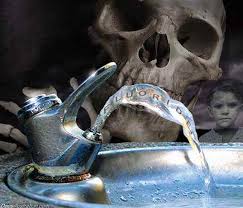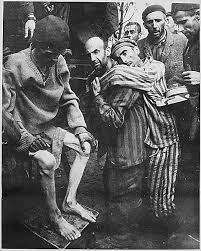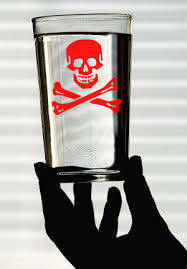 In September 2000 the Department of Health legislated regulations in respect of the fluoridation of potable water in South Africa. The regulation indicated that water service providers are obliged to fluoridate water to a concentration level of up to 0.7 mg F/litre as of September 2002. This legislation was initiated in a bid to stop tooth decay, especially in young children despite the fact that there remains little evidence proving that fluoride in water minimizes tooth decay. Some consider this act as being unconstitutional because consumers of water in the population are not consulted in this matter and the resulting accusations are that of forced medication.
In September 2000 the Department of Health legislated regulations in respect of the fluoridation of potable water in South Africa. The regulation indicated that water service providers are obliged to fluoridate water to a concentration level of up to 0.7 mg F/litre as of September 2002. This legislation was initiated in a bid to stop tooth decay, especially in young children despite the fact that there remains little evidence proving that fluoride in water minimizes tooth decay. Some consider this act as being unconstitutional because consumers of water in the population are not consulted in this matter and the resulting accusations are that of forced medication.
Fluoride is used as an insect and cockroach killer. As little as one-tenth of an ounce of fluoride will cause death. It is more poisonous than lead and just slightly less poisonous than arsenic. A glass of fluoridated water will not cause immediate death but concerns rest in the long term effects of the chemical on the body. An increase in fluoride levels in the tissues and organs of the body results in a wide range of chronic diseases. Birth defects, genetic damage and cancer are the most worrying long term effects of fluoride. Other effects include the aggravation of kidney disease, diabetes and hypothyroidism. Multiple scientific studies have proved the link between increases in the concentration of fluoride and carcinogenic tumour growth. A study in 1975 based around millions of subjects revealed a 5 to 10% increase in cancer death rate within three to five years after fluoridation was put into the water. Ten years later, Proctor and Gamble, makers of Crest toothpaste found that fluoride was causing precarcinogenic changes in cells.
Substances like fluoride which cause genetic damage are called mutagenic substances and it is a well-accepted fact that substances which are mutagenic also tend to be carcinogenic, or cancer producing. In fact, this is exactly what has been found with regard to fluoride.
During World War II hundreds of thousands of innocents were exterminated in concentration camps in Russia and Germany. Nazi scientists keen on controlling the behaviour of camp inmates experimented with fluoride. Repeated doses of very small amounts of fluoride were discovered to affect the brain, slowly poisoning and narcotizing people, making them submissive. Eager to exploit the effects of the drug, both German and Russian camp commanders added fluoride to water supplies. The German chemical manufacturing giant I.G. Farben became responsible for mass producing fluoride for the death camps and other possible future uses. Today over 60 tranquilizers on the market contain fluoride. Strong tranquilizers like Rohypnol and Stelazine are highly fluoridated and like the majority of brands in the market they are produced by I.G. Farben and its subsidiaries (Roche products being one of them).
 American soldiers entering Germany at the end of the war made the liberating of prisoners of war at concentration camps a priority. At camp after camp, they found stockpiles of fluoride stored near the water supply. When they asked what the fluoride was used for, they were told that the Nazi Germans used the substance as an additive to the prisoner’s water, to make them docile. This is the first known incidence of intentionally fluoridating drinking water.
American soldiers entering Germany at the end of the war made the liberating of prisoners of war at concentration camps a priority. At camp after camp, they found stockpiles of fluoride stored near the water supply. When they asked what the fluoride was used for, they were told that the Nazi Germans used the substance as an additive to the prisoner’s water, to make them docile. This is the first known incidence of intentionally fluoridating drinking water.
Fluoride is an industrial waste product, a by-product of the aluminum industry and the phosphate fertilizer companies. Historically, this substance was quite expensive for chemical companies to dispose of. They had vast amounts of the by-product and they had to get rid of it, the companies decided to do this by convincing governments of the benefits of diluting the waste inside our water.
The dangers of fluoride inhalation are exhibited by people living in the vicinity of aluminum, phosphate, steel, clay, glass and enamel plants who are exposed to high levels of fluoride in the air. These areas show extremely high lung cancer rates that decrease as you get away from the downwind plume of the steel mills. If fluoride was left with the phosphate and sold to farmers, it would kill their crops.
The Pelindaba nuclear/chemical complex, is set to become the major supplier of hundreds of tons of fluoride which will be added to drinking water throughout the country from next year. What is even more intriguing is that this specific nuclear/chemical complex was set up by the apartheid government in the 1960s to produce atomic bombs and enriched uranium fuel.
In addition to these shocking facts it has been further discovered by fluoride researcher Ian E. Stephens that Prime Minister Margaret Thatcher tripled the water-fluoridation budget in Northern Ireland during the mid 80’s. Stephens speculated that this was not motivated by concern for dental health, but an attempt to pacify political activists in the area. It is no secret that Thatcher opposed sanctions on apartheid South Africa and publicly condemned ANC members as terrorists.
During the past 10 years South African water boards and Rand Water specifically have been making submissions to government ministries. These submissions center around acquiring indemnity from the Department of Health against any claims arising from the fluoridation of water giving rise to possible health implications on individuals or impact on the environment. The Department of Health has responded that any claims regarding possible health implications or impact on the environment on industrial water users must be made against the Minister of Health. In this way the water boards will not be found liable should any claims arise from the fluoridated water.
The majority of countries in the world have objected to the fluoridation of their water. Many European countries have spearheaded powerful campaigns curtailing and ending government implementation of fluoridated water. Among developed countries, the United States of America remains one of the last countries still allowing the fluoridation of their water supply. In addition to the numerous scholars who object to water fluoridation, 14 Nobel Prize winners who were awarded Nobel prizes, some in Chemistry and others in Medicine, have objected to fluoridation. 
The public is uneducated in terms of this issue. For what other reason would the population be quiet when they are being fed rat/cockroach poison in their water? The multiple chronic diseases and adverse long-term effects associated with fluoride should be enough to create uproar against the implementing of the substance in potable water. Levels in rural areas have been found to be far above what is considered a safe level. How will the increased acidity already identified in the water, mix with the toxic fluoride, and what will be the consequence for those who drink it?
Not only has fluoride been confirmed as being linked to cancer but it also mutates genetic structure. Even more disturbing is the fact that fluoride was one of the most used chemicals by Nazi Germany who used the chemical to subdue prisoners in concentration camps by putting it into the drinking water. This is compounded by the discovery that the Pelindaba nuclear/chemical complex set up by the apartheid government will be supplying us with our fluoride. The company Pelchem, located in Pelindaba, stands to boost its annual revenue of about R130 million by at least 10% if it corners the local water fluoridation market.
Why have South African water boards been so adamant about acquiring indemnity from health and environmental impacts relating to fluoride? This surely posits as evidence that they are aware that fluoride is not a safe substance for human ingestion. It is unusual for a government to agree to carry the liabilities of a company. Yet, in this instance this is the case. What are the motivations behind government’s strong support for the fluoridation of South Africa’s water? Even prestigious Nobel Prize winners have stood up against it. Do these doctors, chemists and scientists not carry enough authority to dissuade us away from this mass poisoning? If they cannot convince us, who can?….
 A few days ago, News 24 published an article about a family from Pietermaritzburg that has been terrorised by instances of spontaneous combustion – the phenomenon where materials ignite without an external source of ignition.
A few days ago, News 24 published an article about a family from Pietermaritzburg that has been terrorised by instances of spontaneous combustion – the phenomenon where materials ignite without an external source of ignition. During the tumultuous era of the 90’s it was considered a
During the tumultuous era of the 90’s it was considered a 

